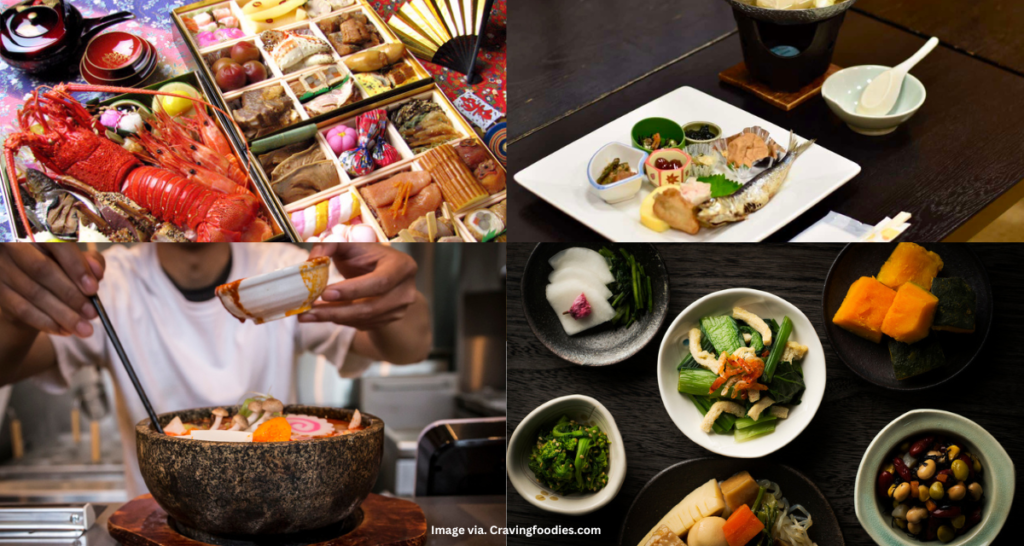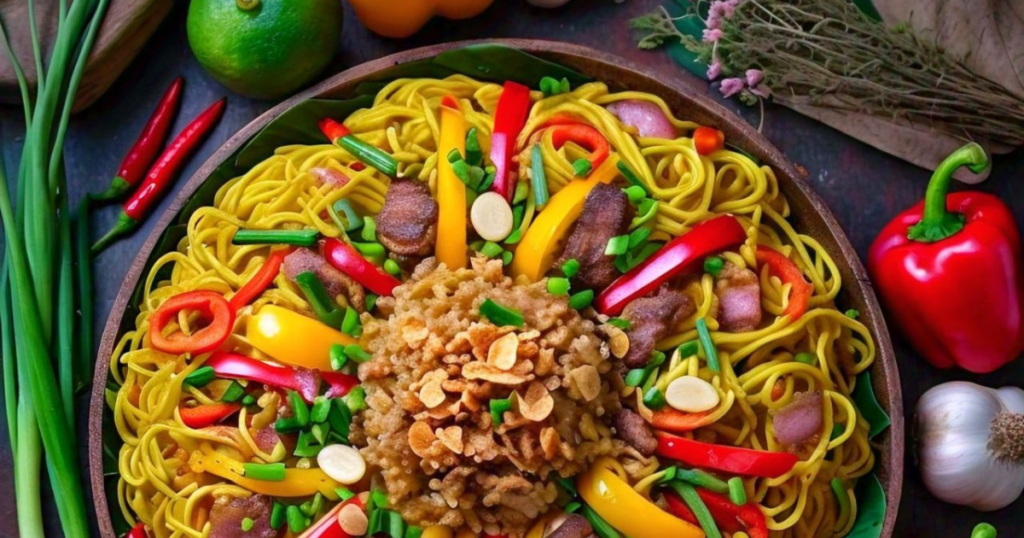Japanese cuisine is famous in the entire world for its brilliant presentation and deep cultural influences that can be traced into its they take consideration from centuries-old tradition that has been followed since ages and forms the Culinary artistry of Japan.With the perfectly blend of metaculus techniques, seasonal ingredients, and profound respect for nature Japanese cuisine has its own great significance.
From sushi to ramen, each dish tells a story of craftsmanship and reverence for food. In this article, we will be learning about 10 extraordinary secrets that make Japanese cuisine different from others.
Secret 1: Umami – The Fifth Taste
Umami, popularly known as the fifth taste in Japan, has properties of a savory flavor that enhances the overall taste of any dish to elevate the entire experience. There is a central role play of Umami in the cuisine of Japan , elevating dishes to new heights of deliciousness. Hence, it is known for its pleasant savory taste making dishes more delicious. Common to Japanese cooking are umami-rich ingredients such as miso, dashi (stock made from kombu seaweed and bonito flakes), and soy sauce. The distinct Japanese cuisine taste profile stands out from other world’s cuisines due to its deepness and complication bodiedness.”
Secret 2: Seasonality and Freshness
“Seasonal ingredients are more important. Japan’s tradition of cooking places a high value on using seasonal ingredients called “shun”. As a result, meals must both taste fresher and reflect the different flavours of nature that occur during the four seasons. Influence on taste and health Incorporating seasonality allows Japanese cooks to capture the best tastes of any given item which means their dishes tend to be very fresh and vigorous.This, also, encourages health with food full of nutritional contents and values.
Secret 3: Harmonious Balance in Cooking Techniques
Understanding “Washoku”
The concept of “Washoku” is the heart of Japanese cuisine badmintons the balance of harmony in the cooking. This is a holistic approach that plays the role of a bridge between diverse flavors coloured textures so that a truly satisfying meal can be created that provides its consumers with a wonderful dining experience.Not only that, the concept of “ Washoku”also covers a perfect integration of diverse flavors and textures. In Japanese cuisine you can trace the balance of salty flavors with a punch of bitterness,sweet and sour flavors. Where ads the texture totally differs from the flavors they are soft and crunchy in nature. This harmonious blend stimulates the palate and delights the senses.
Secret 4: Mastery of Knife Skills
A proper professional training is provided to Japanese chefs to gain masters over the night skills that are known as “hochō.” This is more often that has been followed since decades and it focuses on the precision, control, and finesse in every cut. Japanese cuisine is highly influenced towards giving a perfect presentation with ultimate texture and there comes the role of Japanese knife work.It not only enhances the visual appeal of dishes but also affects their texture and flavor. From delicate sashimi slices to intricately carved vegetables, every cut is a testament to the chef’s skill and dedication.
Secret 5: Sushi Making an exquisite art
The techniques and precision used in Sushi making is a form of ancient art that requires a lot of patience, respect for tradition and precision as Sushi is the signature dish of Japan which is famous worldwide. From selecting the freshest fish to mastering the perfect rice texture, every step in the sushi-making process requires careful execution with full dedication.
Varieties and Ingredients for Sushi
Sushi comes in many forms, from nigiri (hand-pressed sushi) to maki (rolled sushi) and sashimi (sliced raw fish). Each variety showcases the diversity of ingredients and culinary techniques in Japanese cuisine.
Secret 6: Respect for Ingredients
A minimalist approaches followed by Japanese cuisines that allows incorporation of natural flavours and ingredients that enhances the taste of any meal. It is known for its simplicity and every dash is carefully prepared so that it gives the best taste out of it.Japanese people 10 to use minimum seasoning for their cooking and basically aims for having high level of purity and freshness with their ingredients in their dishes. Their cooking Idea revolve around highlighting natural flavours.Whether it’s a piece of sashimi or a bowl of tofu, the focus is on preserving the integrity of the main ingredient.
Secret 7:The Ritual of Tea in Japanese Cuisine
Tea has a great significance in Japanese culture as its symbolises tranquility, harmony and hospitality. Even there is a Japanese cheese ceremony called “chanoyu” or “sado,” is a highly ritualized practice that celebrates the art of tea making and has a great cultural value.This tea ceremony is followed by various ceremonial etiquettes and practices that are deeply rooted into Japanese tradition. With each movement and gesture imbued with meaning and symbolism. From the precise pouring of hot water to the graceful handling of tea utensils, every aspect of the ceremony reflects a deep appreciation for beauty and simplicity.
Secret 8: The unique style of Fermentation
Fermented food plays an important part in Japanese cuisine, adding depth of flavor and nutritional value to foods. Ingredients like soybeans, miso and roasted vegetables are heated, creating a complex and subtle flavor.The best thing about Japanese cuisine is that it does not just focus on rich taste and enhancing the flavour, rather it provides multiple health benefits as well.Whether it’s to boost your immune system or aiding digestion problems, promoting gut health helps the Japanese diet can help cure all such health issues.
Secret 9: Infusing Tradition With Innovation
For preserving the culinary heritage of Japanese cuisine it does not only follows traditional values but also is flexible to adapt innovations. Japanese chefs continuously try to push their boundaries and put their whole potential to make something creative by infusing traditional values from ancient cuisine with a twist of modern techniques and methods. Even if it comes to incorporating global flavors or experiment with uniqie techniques Japanese chefs never fails to make a successful attempts by staying through to its root and effectively evolving with the time. They are the fore frontiers of their culinary innovation.
Secret 10: Mindful Dining
Japanese cuisine is not just popular for its taste but its environment is also meticulous. You can notice a mindful dining experience in Japan with full of gratitude. From the moment food is harvested to the act of eating, every step in the process is imbued with reverence and appreciation.
To conclude,in Japanese Cuisine you can find a perfect combination of craftsmanship harmony and culinary journey that supports rich cultural heritage and celebrates traditional values. Whether it’s umami with rich flavors or its mesmerizing presentation every aspect from Japanese cuisine reflects a deep significance of its history and an unwavering commitment to excellence. By embracing the secrets of Japanese cuisine, we can discover not only new flavors but also a deeper appreciation for the art of food.








